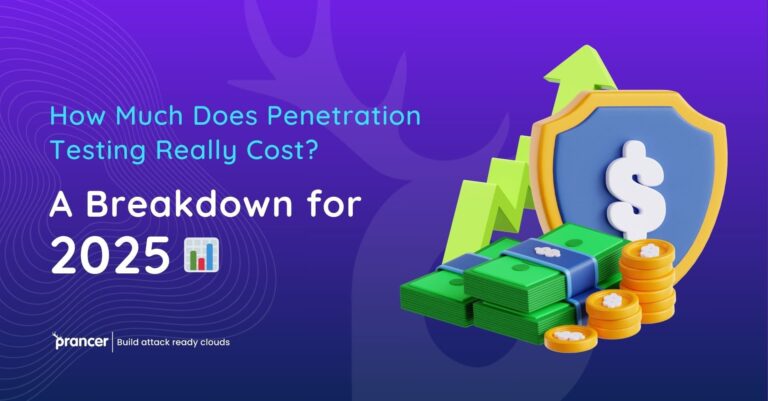Adequate cybersecurity measures must be put and sustained particularly in the current society where the threats are evolving hence becoming more complex. Internal penetration testing is one of the major approaches to guarantee the security of your organization. Thus, this article looks at the methods and tools for internal penetration testing and explains how Prancer’s services, such as automated penetration testing, can help strengthen your security measures.
What is Internal Penetration Testing?
Internal penetration testing is the testing of your internal network to check where one can breach the security of the organization’s network. While external pen test is concerned with testing the external security stance, internal pen testing is concerned with threats that have penetrated the external defenses and are within the internal network.
The Use of Internal Penetration Testing
Why is internal penetration testing so important? It enables an organization to identify vulnerabilities that can be taken advantage of by an insider attack or an external attacker who has penetrated the external layer of defense. This is a kind of prevention like a safety check of a building, where every vulnerable spot is located and fortified.
It is crucial to understand the following basic techniques of internal penetration testing:
- Network Scanning: How to discover active devices and the ports which are open.
- Vulnerability Scanning: Identifying known vulnerabilities in the software and the systems that are being used.
- Password Cracking: People trying to guess or crack passwords.
- Social Engineering: Coaxing persons into revealing secrets that are forbidden to be revealed.
- Privilege Escalation: Allowing access to more privileged information than what is required for the user’s job description.
Tools Employed in Internal Penetration Testing
Several tools are utilized in internal penetration testing to facilitate these techniques:Several tools are utilized in internal penetration testing to facilitate these techniques:
- Nmap: Used when doing network scanning and mapping.
- Nessus: For vulnerability scanning.
- John the Ripper: In password cracking namely.
- Metasploit: For exploiting vulnerabilities.
- Wireshark: In case of network traffic analysis.
How Prancer improves the execution of internal penetration testing.
Prancer builds on internal penetration testing with internal technical expertise and the latest tools. The team comprises skilled and experienced professionals who employ both manual and automated testing to do the assessments. The innovation in Prancer’s business model and readiness to adapt to the new threats makes Prancer special in the cybersecurity market.
Automated Penetration Testing and its Use
This is where automated penetration testing comes in and it proves instrumental in boosting the value of the security checks. This is possible because computerized tools allow organizations to conduct more extensive tests with less manpower than manual tests. This is not only timesaving but also helps to reveal all the possible and even the slightest weaknesses.
Ready to strengthen your defenses? Book a demo with Prancer today and see our solutions in action!
Automated Penetration Testing Solutions of Prancer
Prancer provides the clients with the best automated penetration testing solutions that can be easily incorporated into your current security systems. The tools we use in identifying these possibilities are computerized to use algorithms and machine learning. This enables You to vet and act on the information promptly and be in a better position to avoid possible risks.
Some of the difficulties which organizations encounter when implementing internal penetration testing include the following.
Common Challenges in Internal Penetration Testing
- False Positives: Misidentification of some elements as threats which are in fact are not threats at all.
- Resource Constraints: Shortage of time and resources, so tests cannot be conducted for long and elaborate procedures that would increase reliability of the results.
- Complex Environments: Managing complex and constantly changing network environments.
- Resistance to Testing: Challenges to testing: The challenge of organizational unwillingness to go through testing.
Risk Control with Internal Penetration Testing
The most important thing that can be stated is that through internal penetration testing, the risks are decreased to a minimum. Preventing threats from being used against an organization is useful when it comes to guarding information, abiding by set rules, and preserving the image of an organization.
The Strategies Found to Be Effective in Internal Penetration Testing
To ensure the success of internal penetration testing, follow these best practices: To ensure the success of internal penetration testing, follow these best practices
- Establish Clear Objectives: Decision of what you intend to accomplish with the testing.
- Use Skilled Professionals: Use professionals and accredited testers.
- Leverage Both Manual and Automated Testing: Integrate the concepts of the two strategies.
- Document and Review Findings: Record all that is done in detail and compare with the outcomes sometimes.
- Implement Recommendations: Implement solutions to enhance security from the results of the test.
How to Choose Your Penetration Testing Provider
- Experience and Expertise: Another important factor that should not be overlooked is to go for a company with a good past performance.
- Comprehensive Services: Make sure they provide both, the manual and the automated testing services.
- Customization: The flexibility that comes with the services offered by the various firms so they can suit your needs.
- Reputation: Read other people’s opinions, for instance, reviews or testimonials of other clients.
Taking the Story Behind Prancer to the Real World
The company has positive experience of internal penetration testing with Prancer. For instance, we assisted a financial company realize embarrassing gaps that when exploited would result in an extensive loss of data. The tools that we have deployed to automate the process also helped identify vulnerabilities that could be exploited; the client was then able to respond and contain the situation before it got worse. The case of Microsoft and Skype is a perfect example of how our strategy works and is effective.
Conclusion
Therefore, internal penetration testing represents a crucial approach in organizations’ management of cybersecurity threats. Through the modeling of attack scenarios from within the network, the organization can discover and solve weaknesses before the external enemy gets to attack. The solutions of Prancer, such as automated penetration testing, allow for an all-encompassing and efficient method for realizing the security of your systems.




